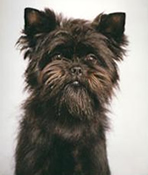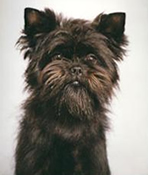5 Critical Steps in the Evolution of Dogs
The history of our canine companions is a quite lengthy one. In fact, researchers and scientists have found that their appearance predates that of humans by a wide margin. While theories of just how man and dog came together may differ, as do theories concerning the specific ancestors of the domesticated dog that we are so familiar with, the fact remains that the evolution of the dog, as well as that of its relationship to humans, stretches back deep into time and history. Here are 5 critical steps in dog evolution:
- The split between dog-like creatures and cat-like creatures came early. During the time period, approximately 42 million years ago, in which the prehistoric mammal group Miacidae gave rise to Carnivora - meat-eating mammals - differentiation between the prototypes of the dogs and cats we know today began to occur. While the evolution of the Carnivora-marking carnassial teeth, which allow for the eating of meat with their powerful scissor-like action, took place in the prehistoric mammal group Miacidae, it was just into the rise of the meat-eating mammals that the inner ear differences, skull shape and size, and other factors began to separate those animals into caniforms and feliforms.
- The evolution of longer legs increased prey options. Not only did these longer legs allow for the running down of prey, but they also allowed the prehistoric canid-type mammal to become differentiated sufficiently from the other meat-eating mammals that arose out of the Miacidae, from the sub-family called Miacis, to form the first and oldest group of the Carnivora. This most ancient form of the canid, the ancestor of the Canidae family, is known as the Hesperocyon gregarius and has been dated by scientists to about 37 million years ago. These canids were small creatures, similar in size to a small fox. Gradually these longer legs, an improvement over the smaller legs of the past that placed the body much closer to the ground, elongated further. This expanded the range of prey they could successfully hunt. and moving slowly towards another level of dog-like development.
- The development of bone crushing teeth came with an increase in size and muscle. The evolution of the jaw and teeth in this manner, allowing for the crushing of bones to get at the nutrients of the marrow, was another major step in the development of the dog as a separate species significantly different from other meat-eating mammals. This particular bit of evolution is most notable in the Borophaginae, the second stage, in a sense, of the canid. These canids were bigger and burlier than their Hesperocyon predecessors, and had the muscular development and size to put those bone-crushing teeth to work on the larger prey. They could bring down such prey on the run, using pure power to muscle that prey down to the ground for the kill.
- Caninae was the last of the ancients. Of the three subgroups within the lineage descending from that first canid-type mammal, only the Caninae survived. The last of the Hesperocyon and Borophaginae canids are thought to have faded away about 2 ?to 3 million years ago, leaving just the Caninae - a canid type that had evolved to such a degree that it would easily be recognized as a dog. It is from this line of prehistoric dogs that the Canidae line that we see today evolved. From this comparatively modern line of canid came wolves, coyotes, foxes, and dogs.
- Man and dog come together. While there is academic dispute over whether or not the domesticated dog of today is descended from the wolf or from a species of Canidae all its own, the general scenario of how man and dog came together is fairly well-agreed upon ? aside from a bit of theoretical disagreement on exactly who domesticated whom -- as well as the the variety of effects that this coming together had upon the evolution of the dog.
Dogs probably started their interactions with humans as scavengers, hanging around camps, eating leftovers and leavings. Puppy captures most likely set the stage for real domestication. One of the most notable changes that came about from this union ?a feature that is not seen in wolves today ?is the ability of dogs to understand, or read, human signs and behaviors, such as changes in tone or voice or pointing. Another highly significant evolutionary change is the broad range of dog breeds that have arisen from human breeding efforts to create dogs for specific purposes, resulting in tiny dogs that can sit in the palm of a man's hand, to dogs well over 200 pounds in weight.
The evolution of the dog has been a process that has taken many millions of years. Yet, in light of the many tasks and the continuing creation of specific breeds, it seems as though the evolution of this magnificent creature still continues. Although in many countries, domesticated dogs still do labor at an assortment of primarily physical tasks, the number of tasks that working dogs perform that rely on intellectual ability, as opposed to simple strength and endurance, has increased. Service dogs, for example, are amazing in their abilities, both in what they can do and in how well they can read the needs of those that they serve. However, working dogs are, in most nations, in the minority, with the average dog being a beloved companion above all else.



 Tips For Renting With Pets: Finding a place to live with your dog
Tips For Renting With Pets
I have been owned by dogs for ov
Tips For Renting With Pets: Finding a place to live with your dog
Tips For Renting With Pets
I have been owned by dogs for ov
 How to potty train your puppy
Dont break the house rulesPotty train your dog
How to potty train your puppy
Dont break the house rulesPotty train your dog
 Dogs :: Dog Ears Can Be a Real Trouble Spot (Page 1 of 2)
For such a proportionately small area of your dog抯 body, ear
Dogs :: Dog Ears Can Be a Real Trouble Spot (Page 1 of 2)
For such a proportionately small area of your dog抯 body, ear
 Casterton Working Kelpie Muster
Herding Dogs - KelpiesAustra
Casterton Working Kelpie Muster
Herding Dogs - KelpiesAustra
 Some Popular Breeds of Dog in the United States
&nbs
Some Popular Breeds of Dog in the United States
&nbs